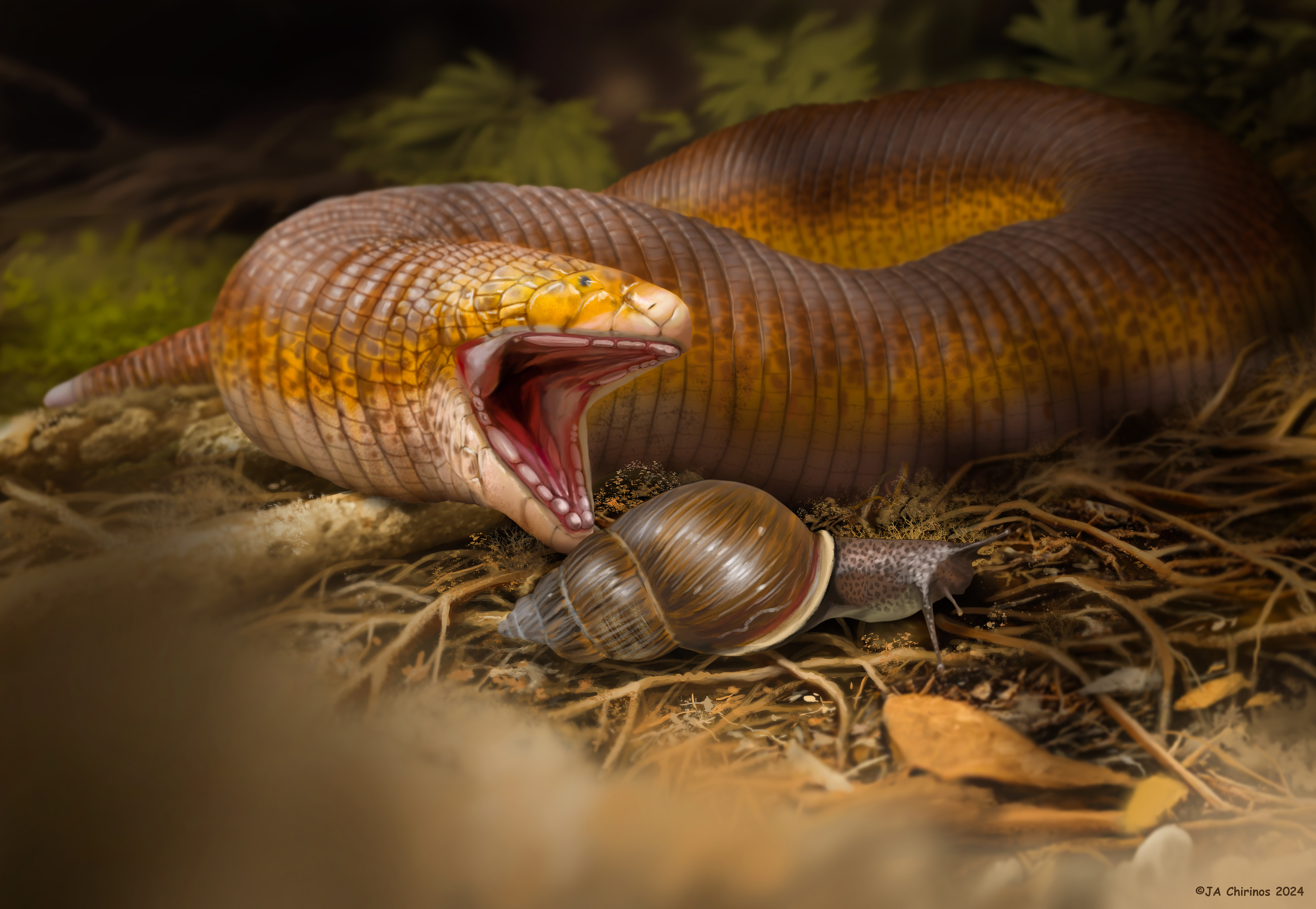Public Group
active 1 week, 3 days agoShare captivating insights about groundbreaking discoveries in just 338 characters. Whether it’s in, e.g., science or technology.
Please read this before posting.
Tamika Fifield posted an update in the group
 Discovery 3 months, 2 weeks ago
Discovery 3 months, 2 weeks agoScientists Discovered The World’s Largest Coral, Over 100 Ft Long And 300 Years Old, In The SW Pacific Ocean Near Solomon Islands. Unlike A Reef With Many Colonies, This Single Coral Has Grown Continuously For Centuries. Visible From Space, It Contains Nearly 1 Billion Polyps. Despite Resilience, It Remains Vulnerable To Climate Change And Human Threats.
Scientists discover world's largest coral in Solomon Islands | REUTERSWilton Astudillo posted an update in the group
 Discovery 4 months, 1 week ago
Discovery 4 months, 1 week agoScientists Have Discovered Terastiodontosaurus Marcelosanchezi, The Largest Known Worm Lizard, From Fossils In Tunisia. This Reptile, Over 3Ft Long & 50 Myr-Old, Had Strong Jaws & Fed On Snails. Unlike Modern Burrowers, It Likely Lived On The Surface. It’s Closely Related To The Checkerboard Worm Lizard, Both Of The Trogonophids Family.
Alexander Hamilton posted an update in the group
 Discovery 8 months, 1 week ago
Discovery 8 months, 1 week agoArchaeologists Have Discovered The World’s Oldest Calendar At Gobekli Tepe, Turkey, Dating Back 12kyrs. The Site Features 365 “V” Symbols On A Pillar, Representing A 12-Month Lunar Calendar With 11 Extra Days. The Carvings May Depict A Comet Strike 13kyrs Ago That Influenced Early Agriculture, Religion, And Possibly Led To Writing.
Kandice Tirado posted an update in the group
 Discovery 8 months, 4 weeks ago
Discovery 8 months, 4 weeks agoIn A World-First, Astronomers Have Witnessed A Supermassive Black Hole “Waking Up” And Brightening In Real-Time. Located 360 Million Light-Years Away In Galaxy SDSS1335+0728, The Black Hole Has Shown Increased Luminosity Since 2019, But Its Activation Cause Remains Unknown. Similar Activation Could Occur With Sagittarius A* In Our Galaxy.
Discovery Bit This is a social network for those interested in unique and valuable information!Ken Yun posted an update in the group
 Discovery 9 months ago
Discovery 9 months agoScientists Uncovered A 1,400-Year-Old Seagrass Clone, Zostera Marina (Eelgrass), In The Baltic Sea, Making It The World’s Oldest Known Marine Plant. Using A Genetic Clock Calibrated With A 17-Yr-Old Seagrass Clone, The Team Determined The Age By Comparing Genetic Variations. This Method May Reveal Older Organisms In Other Seagrass Species.
Kandice Tirado posted an update in the group
 Discovery 9 months, 3 weeks ago
Discovery 9 months, 3 weeks agoAstronomers Discovered WASP-193b, An Exoplanet 50% Larger Than Jupiter But Only 14% Of Its Mass, Making It The 2nd Lightest Known Planet After Kepler 51d. Located 1,200 LY Away, The “Puffy Jupiter” Is Likely Comprised Mainly Hydrogen & Helium, And Its Extended Atmosphere Is Ideal For Studying Its Planetary Formation With Tools Like JWST.
Jeff Goldblume posted an update in the group
 Discovery 10 months ago
Discovery 10 months agoThe Closest Transiting, Temperate, And Potentially Habitable Earth-Size Exoplanet, Gliese 12b, Has Been Discovered. It’s 40 LY Away In Pisces, Orbits A Red Dwarf In 12.8 Days, And Has A Surface Temperature Of 107°f. Found By NASA’s TESS, Its Atmosphere Will Be Analyzed By The James Webb Telescope, But Human Visitation Is Impractical.
Kandice Tirado posted an update in the group
 Discovery 11 months, 1 week ago
Discovery 11 months, 1 week agoAstronomers Observed, For The First Time, The ‘Glory Effect’ (GE) On An Exoplanet, WASP-76b, Similar To Earth’s & Venus‘s. It Features Concentric, Colorful Rings Of Light Caused By Light Reflecting Off Clouds Made Of A Uniform Substance. Extreme Conditions—Scorching Dayside, Nightside Iron Rain—Permit GE, Offering Insights Into Alien Atm.
India Blount posted an update in the group
 Discovery 11 months, 3 weeks ago
Discovery 11 months, 3 weeks agoScientists Discovered A Huge Water Reservoir, 3x Earth’s Oceans, 700 Km Deep Within The Mantle In The Rock Ringwoodite. This Find Challenges Theories On Earth’s Water Origin, Suggesting Possibly Internal Rather Than From Comets. Seismic Data Reveals This Underground Ocean, Potentially Reshaping Our Understanding Of The Planet’s Water Cycle.
Ken Yun posted an update in the group
 Discovery 1 year ago
Discovery 1 year agoThe Carrington Event (CE) Of 1859, The Largest Solar Storm (SS) On Record, Was Stronger Than Believed. Historical Magnetograms Show It Reached >500 NT/Minute. SSs, Like CE, Have Occurred Throughout History, But Accurate Data To Measure Their Sizes Spans < 200 Yrs, Highlighting Our Vulnerability To Such Events And The Need For Preparation.
Groups
- 354 members
- 340 members
- 288 members
- 286 members
- 271 members
Recent posts
-
 Top Hotels In Venice Italy On The Grand Canal (Walking Distances Included) November 28, 2024
Top Hotels In Venice Italy On The Grand Canal (Walking Distances Included) November 28, 2024 -
 Top Hotels Near Taj Mahal (Walking And Driving Distance Included) November 21, 2024
Top Hotels Near Taj Mahal (Walking And Driving Distance Included) November 21, 2024 -
 Top Victoria Falls Hotels (Walking And Driving Distances Included) November 20, 2024
Top Victoria Falls Hotels (Walking And Driving Distances Included) November 20, 2024 -
 Top Iguazu Falls Hotels (Walking Distances included) November 17, 2024
Top Iguazu Falls Hotels (Walking Distances included) November 17, 2024 -
 Top Maldives Resorts And Must-See Attractions: A Complete Guide November 6, 2024
Top Maldives Resorts And Must-See Attractions: A Complete Guide November 6, 2024
Birthdays
You must be logged in to see the birthday of the people you follow.Fun+ Extras
Log in with your credentials
Forgot your details?
Create Account









